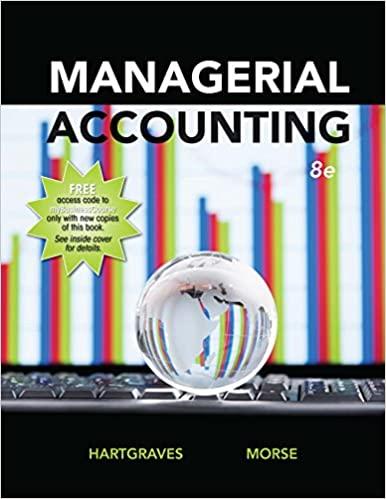Balance Sheet & Analysis You use the calendar year for your financial records. It is January 1, 2021, and you are putting together your annual net worth statement (aka balance sheet). Use the information below to develop this beginning of the year balance sheet for 2021. Use the "Chapter 4 Balance Sheet Assignment Fall 2021" on D2L. Then complete the analysis at the end of the balance sheet. You will use accrual accounting. You MUST use formulas. Not everything on here belongs in the balance sheet. Remember that current is this year, intermediate is 1-10 years (for liabilities, this would be things like car loans: loans that would be paid off in the next 1-10 years), and long-term relates to land and loans related to land. You have $50,000 farm-related cash on hand in checking and savings. 1. Inventory of Crops and Livestock is as follows: a. Total corn in storage is 25,000 bushels. Current market price is $4.50/bu. b. Total Soybeans in storage are 3,500 bushels. Current market price is $10.75 c. 21 steer calves valued at $1,000,00/head. d. 16 heifer calves valued at $900.00/head. e. 49 bred cows (worth $1,200 each) and 2 bulls (worth an average of $2,500 cach). (Hint: cows and bulls are your breeding livestock) 2. Feed and supplies: a) Corn silage: 300 tons valued at $35 per ton b) Haylage: 100 tons worth $75 per ton c) Hay: 150 tons worth $125 per ton d) Corn Stalks: 50 tons at $35 each 3. Your current operating loan (due within one year) with Farm Credit is $90,000, with accrued interest of $4,500. 4. In November of 2020, you prepaid $36,000 for corn seeds for 2021's crops. 5. You have 500 gallons of diesel fuel on hand (currently worth $2.25/gallon) 6. Your machinery and equipment have a depreciated book value of $235,000 from your depreciation schedule, but you estimate its market value at $355,000. 7. The farm has several buildings that have a depreciated book value of $190,000. Your estimated market value is $385,000. 8. You sold a heifer calf to your niece for a 4-H project. You're still waiting for her to pay you the $700 you agreed upon. 9. You own 640 acres of farmland that was purchased in bits and pieces over the years for a total of $2,500,000. Currently, land in your area is valued at $8,500/ac. 10. You own hunting cabin and a little land, worth $75,000 and a personal car worth $12,000. 11. You make somd money on the side doing trucking, earning $38,000/year. 12. On December 20th, 2020, you picked up more hay for your livestock worth a total of $10,000. You will not pay for this feed until mid-January of 2021. The hay is included in your inventory above. 13. You still owe Soil Testers, Inc. $1,000 for soil sampling, 14. Your neighbor still owes you the second of two installment payments of $8,000 for helping with 2020's harvest. 15. The vet bill arrived in the mail today (January 1) and showed the farm's outstanding vet bill for 2020 at $1,500. 16. On your farm's credit card, you have a balance of $4,200. Your personal credit card has a balance of $2,500. 17. You started the year with student loans totaling $16,000, but you paid off $3,000 in nrincipal (balance remaining: $13,000) and $600 in interest. +Below find a listing of longer-term liabilities: Description Purpose Date Original Incurred Amount Remaining Current Interest Balance at Portion Accrued end of 2021 (paid 2021) Jan. 1, 2021 $636,000 $32,000 $12,250 $70,000 $20,000 $2,000 2018 2013 $800,000 $140,000 2015 $40,000 $15,000 $4,400 Mortgage Land loan Tractor loan 4WD tractor F350 Pickup loan Barn loan Equipment Forage loan Harvester $900 2014 2016 $275,000 $50,000 $230,000 $10,000 $19,500 $10,000 $1,000 $500 . To analyze the balance sheet, calculate the following: Current Ratio, Market Value Working Capital, Market Value Debt to Asset Ratio, Market Value Equity to Asset Ratio, Market Value Debt to Equity Ratio, Market Value Net Capital Ratio, Market Value Debt Structure Ratio What is the strongest part of the operation (liquidity or solvency)? Explain. What is the weakest part of the operation (liquidity or solvency)? Explain. Why is it recommended that farmers use market basis even though other businesses are told to use cost basis? Explain A B C Market Value FARM LIABILMES Market/Cost Value current liabilities Accounts payable Short-term notes and credit lines Accrued interest - short - Intermediate - long-term Principal due in 12 mo- intermediate - long term E Total Current Liabilities intermediate abilities Notes and contracts, remainder F. Total Intermediate Liabilities long-term liabilities Notes and contracts, remainder G. Total long-term Liabilities Agc 271. Farm & Ranch Management Chapter 4 Balance Sheets 75 Points FARM ASSETS Cost Value 5 6 current assets 7 Checking and Savings Accounts 8 Crops held for sale 9. Feed/bedding on hand 10 Prepaid expenses 11 Market livestock 12 Accounts receivable 13 Miscellaneous 14 15 A Total Current Assets 16 Intermediate assets 17 Breeding livestock 18 Machinery and Equipment 19 B. Total Intermediate Assets 20 21 long-term assets 22 Buildings/improvements 23 Farmland 24 C. Total Lone-term Assets 25 D. Total Farm Assets (A+B+C) 26 27 28 29 Ratio Equations 30 Current Ratio 31 Working Capital Market Value 32 Debt to Asset Ratio, Market Value 33 Debt to Asset Ratio, COST Value 34 Equity to Asset Ratio, Market Value 35 Debt to Equity Ratio, Market Value 36 Net Capital Ratio, Market Value 37 Debt Structure Ratio 38 39 What is the strongest part of the operation (liquidity or solvency? 40 Explain. What is the weakest part of the operation (liquidity or solvency? 43 Explain. Why is it recommended that farmers use market basis even though other 42 businesses are told to use cost basis? 43 44 H. Total Farm Liabilities (E+F+G) 1. Farm Net Worth Cost Vap- 1. Farm Net Worth Market Value - owner equity owner equity Market Ratios 2 pts each 16 points total 16










